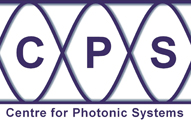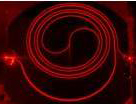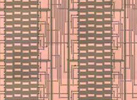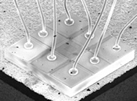| Centre for Photonic Systems Engineering Department Electrical Engineering Division |
 |
 |
 |
 |
 |
| Home | Research | People | Publications | Teaching | CDT | News | Contact |
|---|
|
CURRENT PROJECTS
PREVIOUS PROJECTS |

Heterogeneous IP Networks: HIPNet Objective: ICT is of vital importance to the UK economy. In the past 5 years the UK has made substantial progress in creating one of the most competitive broadband markets in the world and is seeing 3G mobile starting to make a real impact on services. All this is leading towards the UK being a digitally rich economy, with ICT becoming all-pervasive in our lives. The HIPNet project supports the UK in maintaining this technological lead by the validation and verification of these complex ICT networks through a combination of experimental development and modelling. It will focus on traffic modelling and the network testing of techniques needed to economically achieve the required levels of Quality of Service (QoS) for multiple and diverse services in Next Generation Networks (NGNs), under conditions of traffic growth and also of major disruption. This is activity is set against the background of a step change in network features which is driving this additional complexity. A test-bed that contains all the constituent network components of a NGN is to be developed to validate end to end service delivery. In addition it is important to be able to predict the behaviour of complex networks and develop rules to ensure that the networks being built can be scaled to meet the needs of new and evolving services. This aspect of the network validation can be performed by a number of modelling activities, which can then be verified by comparison with the results from the network test-beds. Final Report Summary The work addressed traffic characterisation in next generation IP networks focusing on telematics, video and storage traffic, and captured the traffic profiles in traffic generators in the HIPNet test bed. New differentiated resilience mechanisms and constraint based routing algorithms were developed for next generation IP networks. A telematics motorway scenario and a city scenario were studied. In each case traffic models were developed and captured in experimental traffic generators used in the test beds for validation. A new pico cellular MAC (PC-MAC), with new predictive handover techniques was developed for motorway applications. In the telematics city scenario we developed a Manhattan grid vehicular simulator and proposed a modified version of PRMA to enable communication between vehicles and the base station. A hybrid geocast routing (HGR) protocol that can reliably and efficiently manage safety related communications in large scale vehicular ad hoc networks (VANETs) was introduced. We introduced an intelligent route control scheme for ubiquitous mobile vehicular/Internet networks. We have introduced an integrated QoS framework that inter-operates efficiently with NEtwork MObility Basic Support Protocol (NEMO-BSP) to guarantee QoS requirements. We studied delay tolerant telematics networks, data propagation and imprecise geographic routing. We introduced mechanisms for enhancing QoS in telematics services through the introduction of a new two-tier architecture (pico cellular communication architecture (PCCA)). We introduced a general broadcast protocol that can reliably and efficiently manage safety related communications in large scale VANETs. Extensive experiments have been conducted on different video genres using different codecs. The measured pdfs associated with the packet streams were used to develop mathematical descriptions of the traffic traces and were captured in custom traffic generators establishing the computational complexity, memory utilisation and accuracy tradeoffs. Traffic models were developed for multi-cast video, aggregated video on demand services and high definition video. For further information visit http://www1.aston.ac.uk/eas/research/groups/acnrg/research-projects/hipnet/ |
2020 Centre for Photonic Systems: information provided by webmaster@cps.cam.ac.uk |